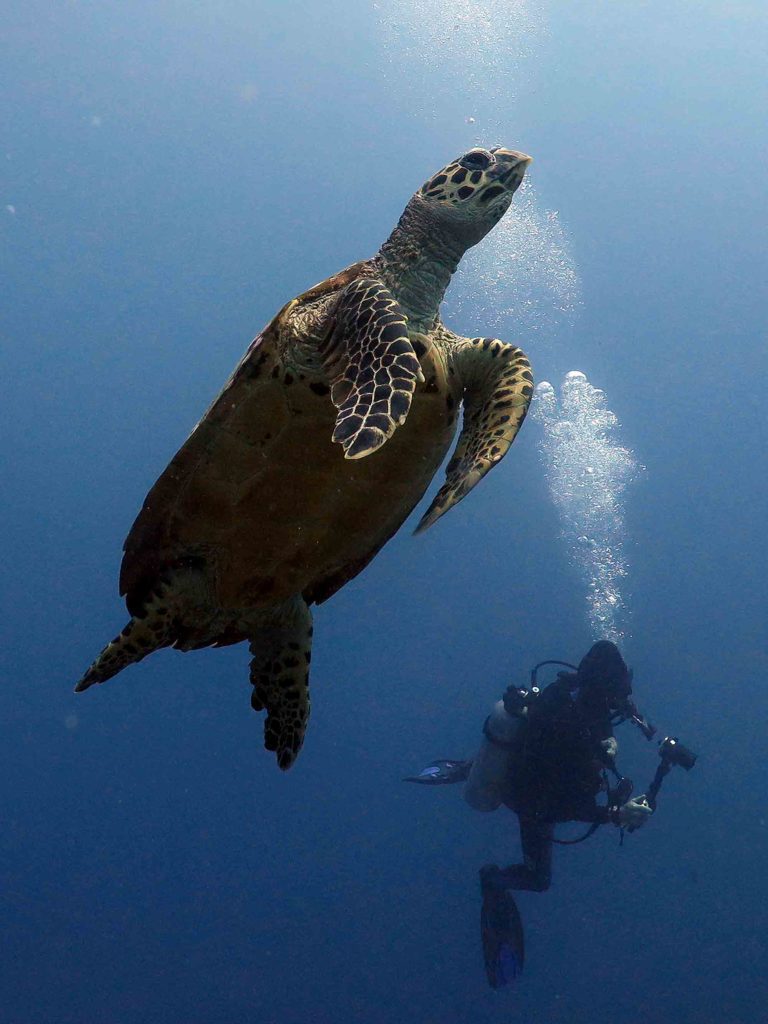Ever find that you know the general direction back to where your shore dive began, but then need to hunt around to find the exit point?
Don’t worry, hawksbill turtles have similar problems. Their navigational skills are not, it seems, all they were once cracked up to be.
Following the routes taken by 22 hawksbills fitted with high-resolution Fastloc-GPS trackers has allowed a team of scientists to draw conclusions about how such sea creatures find their way around in open ocean – and doggedness and luck appear to play a bigger part than previously thought.
Sea turtles have long been considered exemplary oceanic migrants, because they cover often huge distances to reach small, isolated targets for mating and breeding. Afterwards, adult hawskbills choose to return to their original foraging grounds, and because they have no chance of feeding on their favoured algae and sponges until they get there, they might be expected to head back as fast as possible.
The turtles in the study, led by biologist Graeme C Hays of Deakin University in Australia, were migrating over relatively short distances – averaging 106km – to remote targets on submerged banks in the Indian Ocean. But one of them was found to follow a circuitous route of just over 1,300km to return to a foraging ground that would have been only 176km away had it swum in a straight line.
On average the 22 turtles swam twice as far as they needed to, with a lot of searching around going on in the later stages of their journeys.
Off the beeline
“When off the beeline to their target, turtles sometimes corrected their course both in the open ocean and when encountering shallow water,” says the report, adding that the results provide compelling evidence that hawksbill turtles have only a “relatively crude” map sense once out at sea.
Although turtles were proved to possess a form of inbuilt geomagnetic steering in laboratory experiments 20 years ago, the new research suggests that this does little more than enable them to stay on a roughly correct heading, rather than to locate specific targets.
“In some cases, a crude map may be all that is needed: for example, to direct post-hatchling turtles living in the open ocean to swim broadly north, south, east or west to find suitable areas,” say the scientists.
“Similarly, adults migrating to a mainland target to forage or breed may simply need an approximate heading to follow, and then can correct their course when they encounter land.”
Currents and prevailing weather seemed to have little bearing on the turtles’ route-finding. And while some animals are known to develop a good memory of past migration routes, this would be unlikely to apply in open ocean, which offers so few markers or clues. The research has just been published in the Journal of the Royal Society.
Also on Divernet: Turtle Surprise

